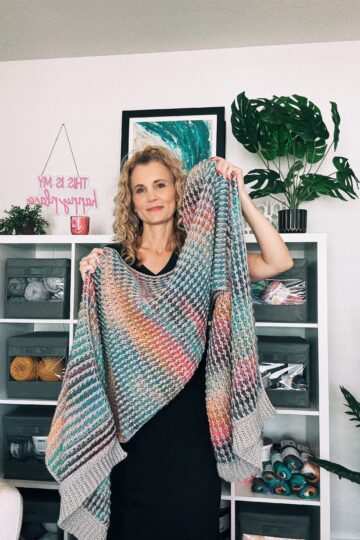Self-striping yarn is one of those love-it-or-hate-it materials for crocheters.
On the one hand, the beautiful color transitions can make even the most straightforward pattern look impressive.
But on the other hand, there’s the issue of abrupt color changes, especially when they hit mid-row. And let me tell you, I totally get the frustration.
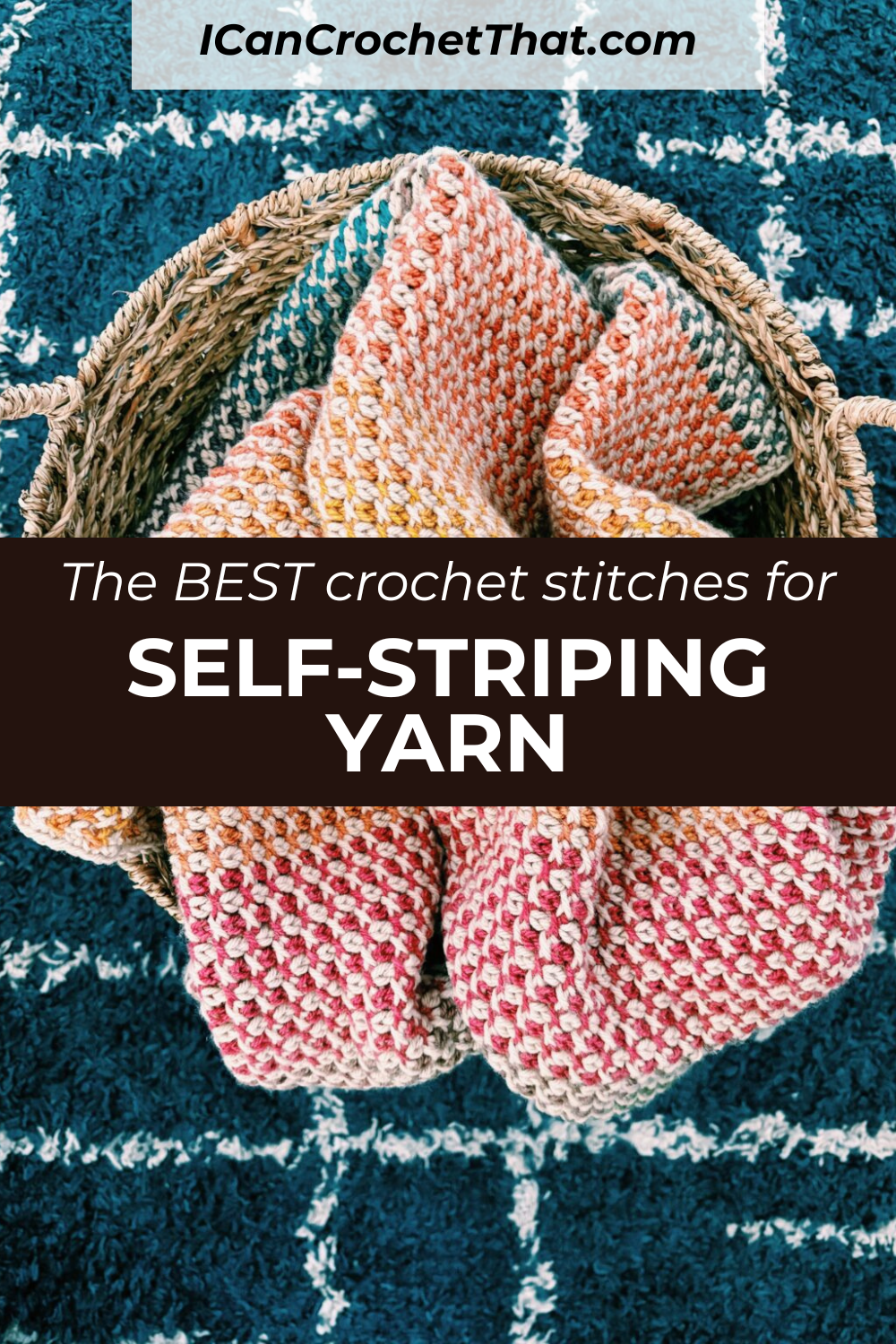
After years of experimenting (and quite a few abandoned projects), I’ve found a handful of stitches—both regular crochet and Tunisian—that make self-striping yarn work with you, not against you.
These stitches help soften harsh transitions, add texture, or blend colors more naturally. Plus, I’ve designed several patterns that pair self-striping yarn with a solid color, which really helps tone things down and create a more polished look.
Below, I’m sharing my favorite crochet stitches for self-striping yarn and linking to patterns I’ve created using them. If you’ve been burned by color changes in the past, don’t give up yet—these stitches might change your mind.
🧶 Best Crochet Stitches for Self-Striping Yarn
1. Moss Stitch (Regular Crochet)
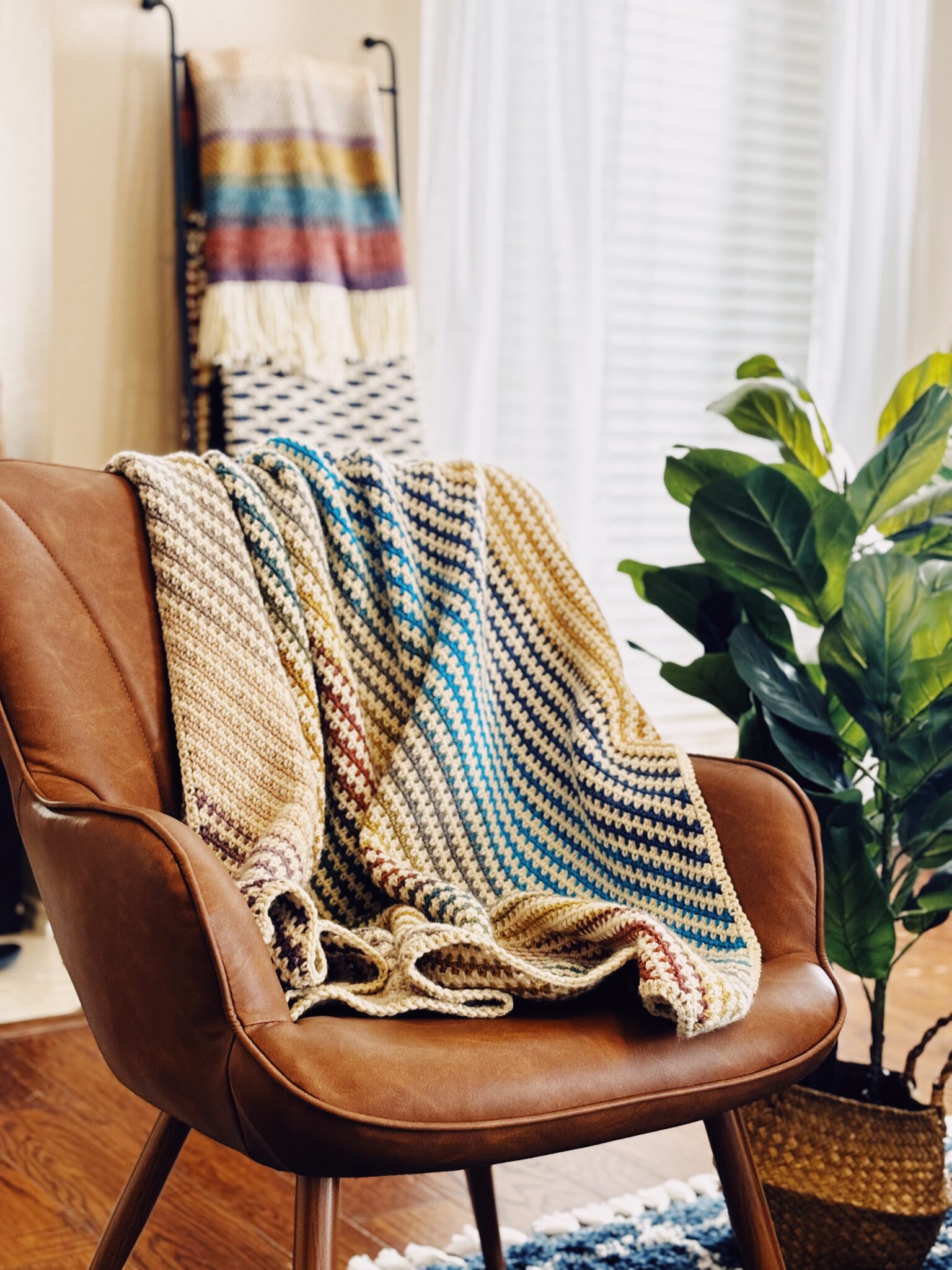
Also called the linen stitch, this one’s a favorite for a good reason.
The simple alternating single crochet and chain stitch combo gives just enough texture to make striping feel subtle and soft. Plus, the short stitch height helps each row show more of a single color.
Try it in these patterns:
➡️ The Estes Blanket
2. Tunisian Knit Stitch
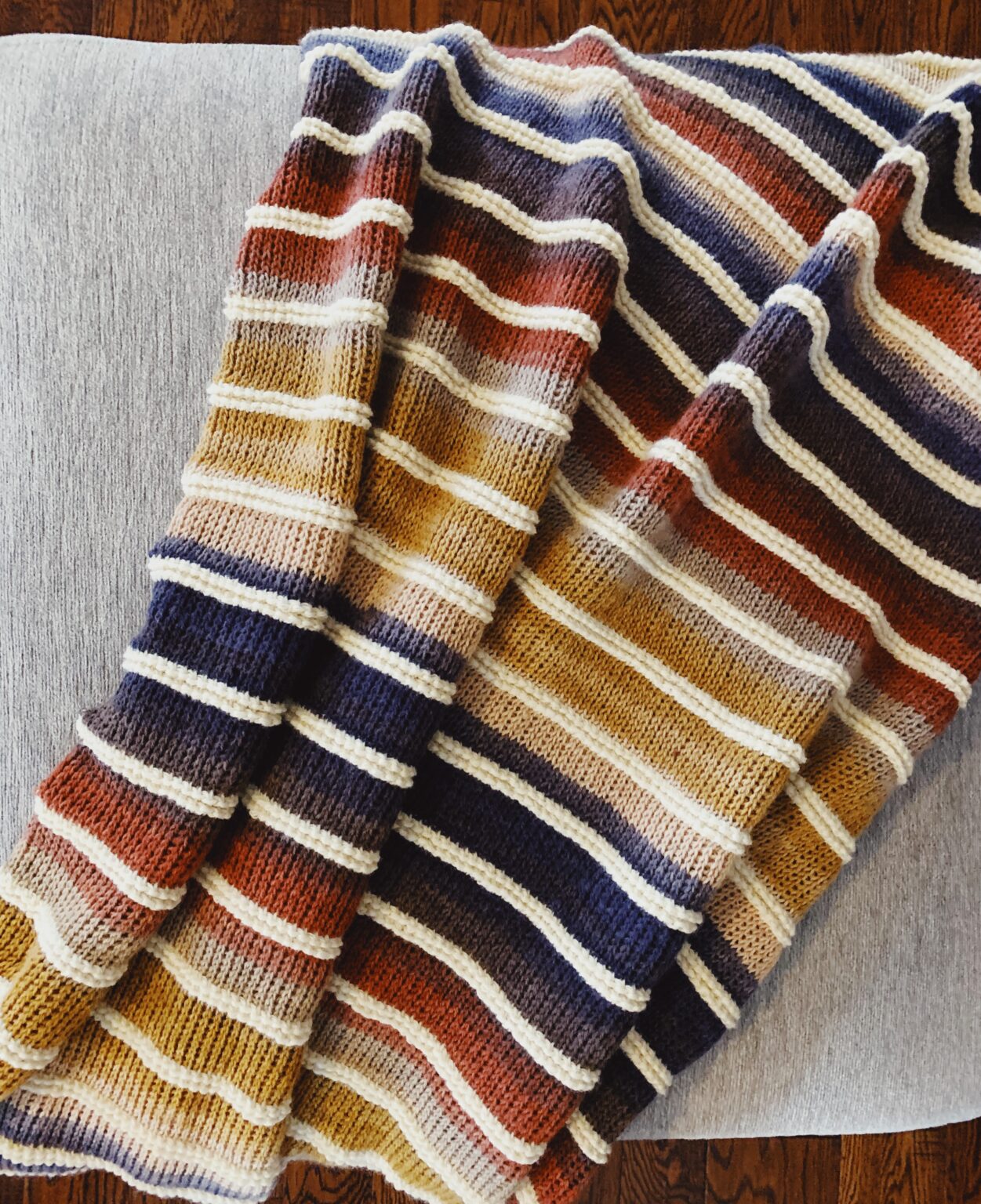
If you love the look of knitting but prefer your trusty crochet hook, this stitch is for you. The knit stitch is thick, cozy, and ideal for color transitions—especially in home décor pieces.
Try it in these patterns:
➡️ Striped Tunisian Crochet Blanket
➡️The Let's Go Camping Blanket
3. Tunisian Half Double Crochet
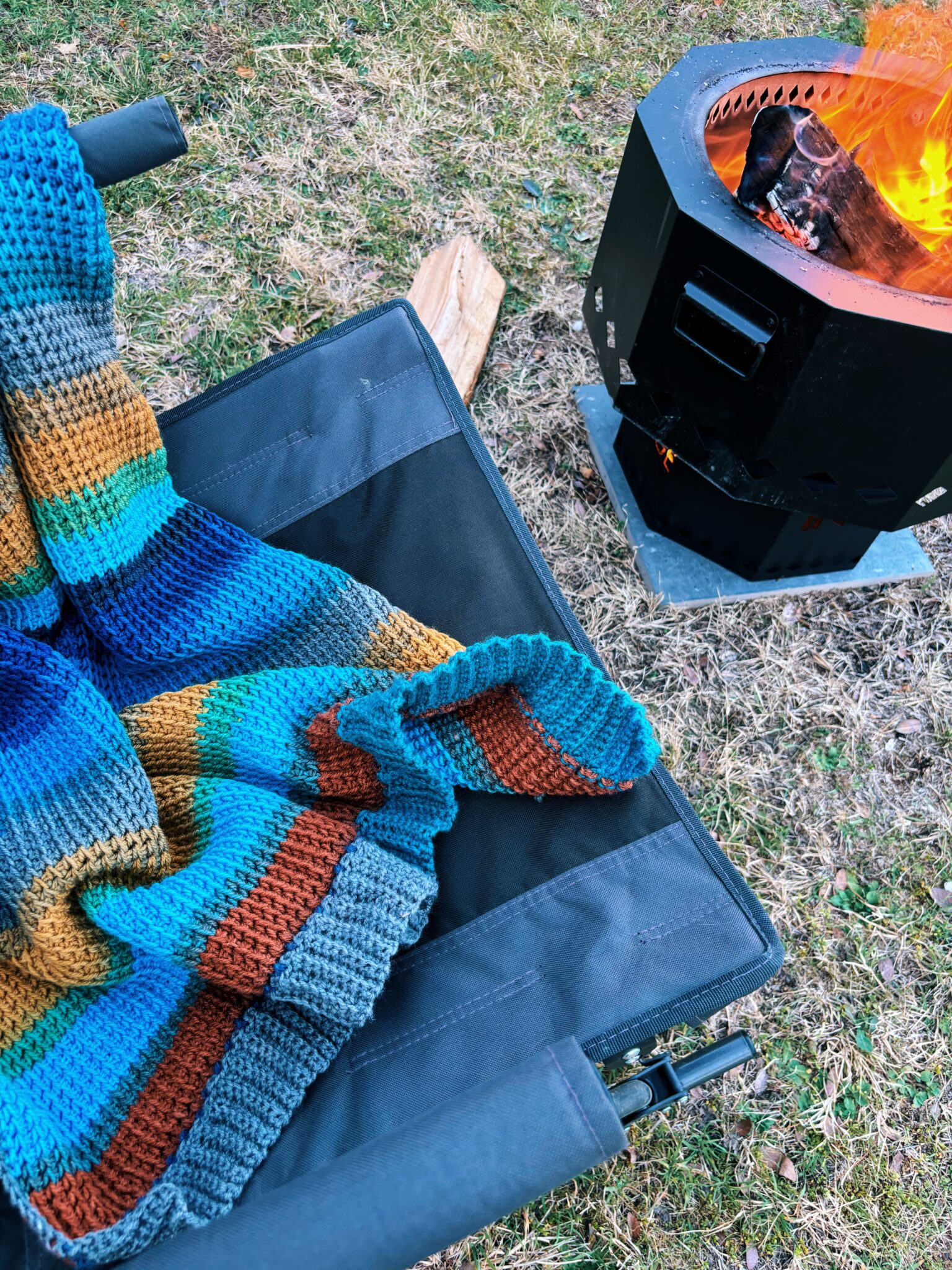
This stitch has the same effect as the regular crochet moss stitch, making transitions feel more blended.
Try it in this pattern:
➡️ The Quinn Camping Blanket
4. Tunisian Simple Stitch (TSS)
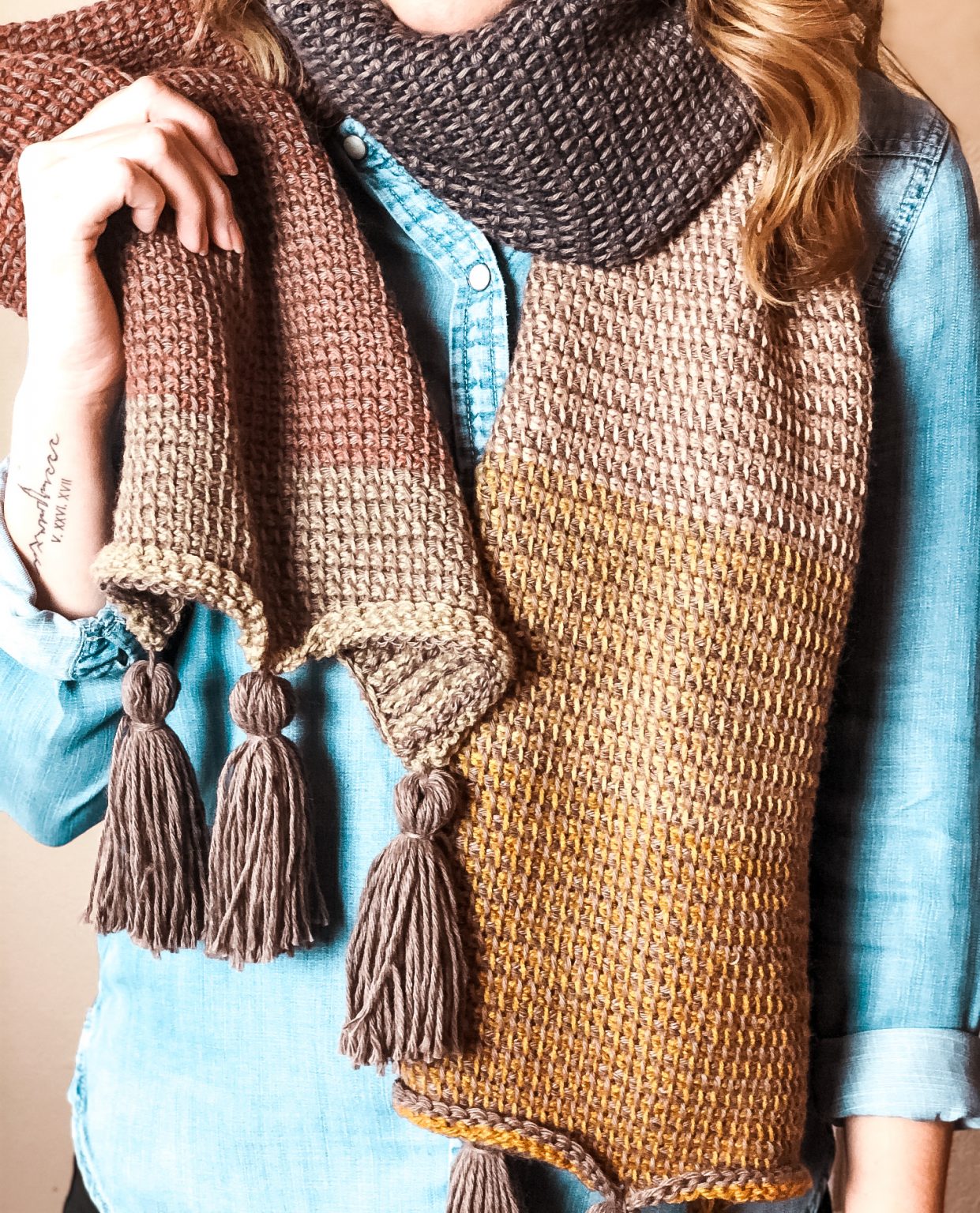
Sometimes, keeping it simple really works. The Tunisian crochet simple stitch is basic but highly effective with the right yarn.
Add a solid-colored yarn, and you’re golden. You'll get a woven look that really makes self-striping yarn shine.
Try it in this pattern:
➡️ Tunisian Crochet Scarf (Pattern revamp coming soon!)
5. Tunisian Crossed Stitch
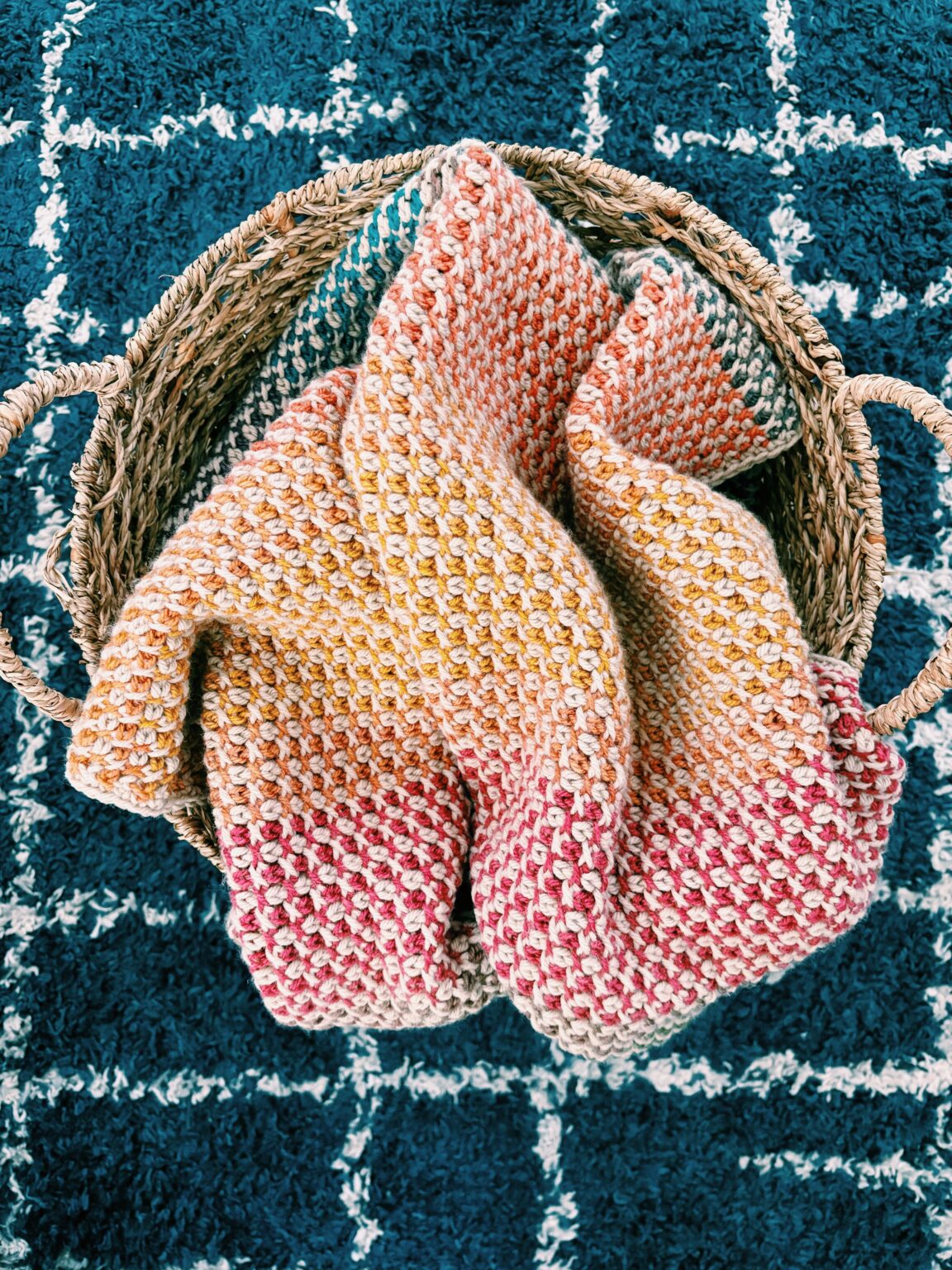
This one adds beautiful movement and visual texture to your project. It helps break up the color changes, making them feel more like a design feature than a flaw.
Try it in this pattern:
➡️ The XOXO Blanket
6. Tunisian Smock Stitch
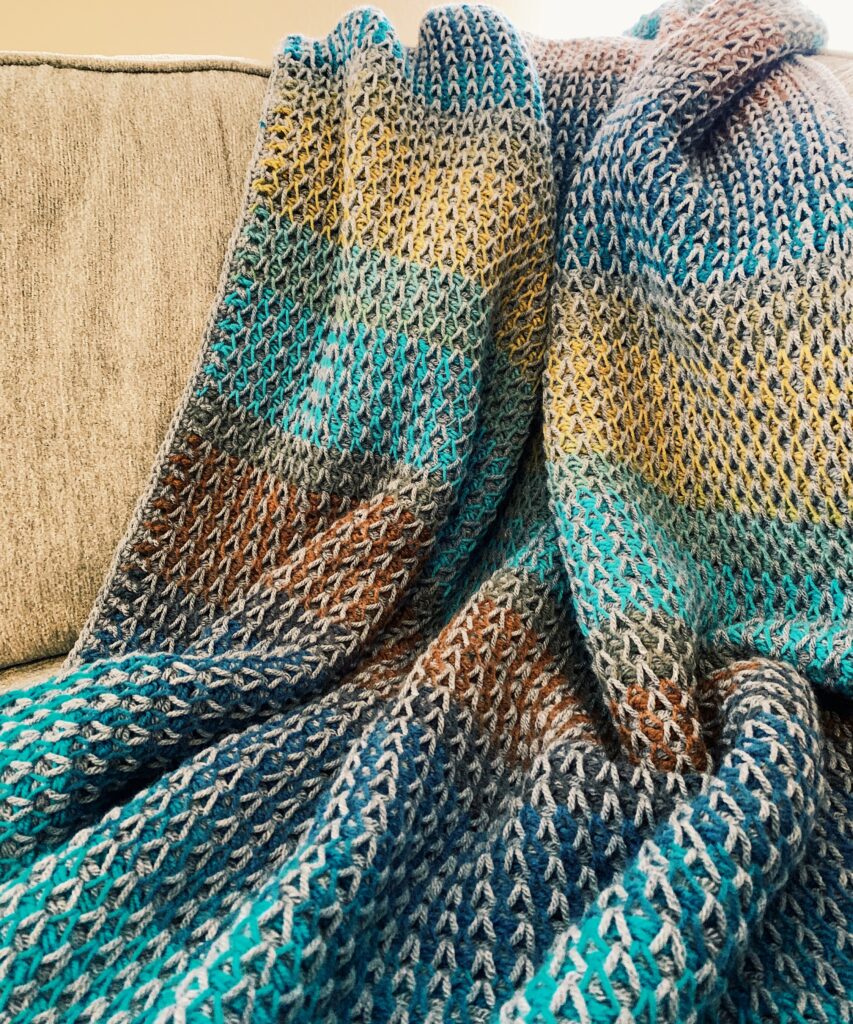
Gorgeous texture alert! The smock stitch looks like little diamonds across your fabric, which does an amazing job of masking color changes, especially when combined with a solid color yarn.
Try it in this pattern:
➡️ The Ethan Blanket
7. Crochet Spiked Granny Stitch (Regular Crochet)
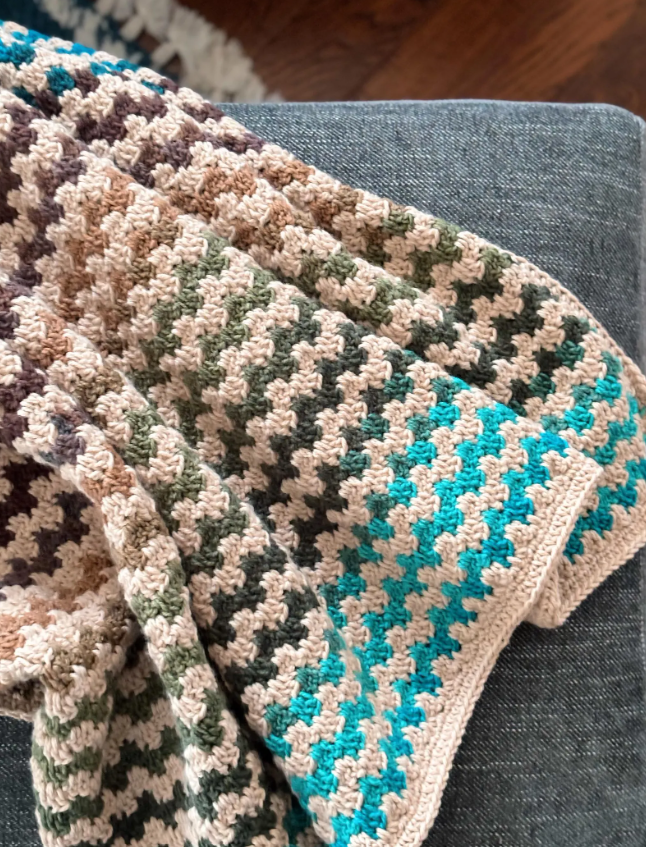
This stitch takes the classic granny stitch and spices it up.
The spikes add visual interest, and when you combine a solid color yarn and self-striping, it distracts from those abrupt changes while giving your project a cool, vintage vibe.
Try it in this pattern:
➡️ The Stevie Blanket
8. Moss Ripple Stitch
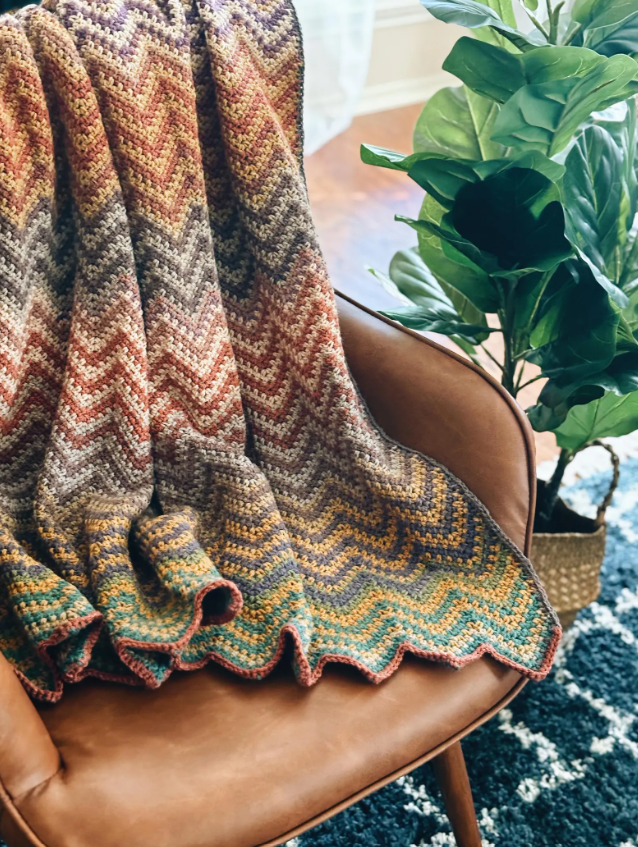
What do you get when you combine two amazing things - like two different self-striping yarns? This moss ripple stitch blanket!
This textured wave stitch creates a mesmerizing pattern that pairs perfectly with slow-changing or even fast-changing yarn.
Try it in this pattern:
➡️ The Teagan Blanket
9. Crochet Crunch Stitch
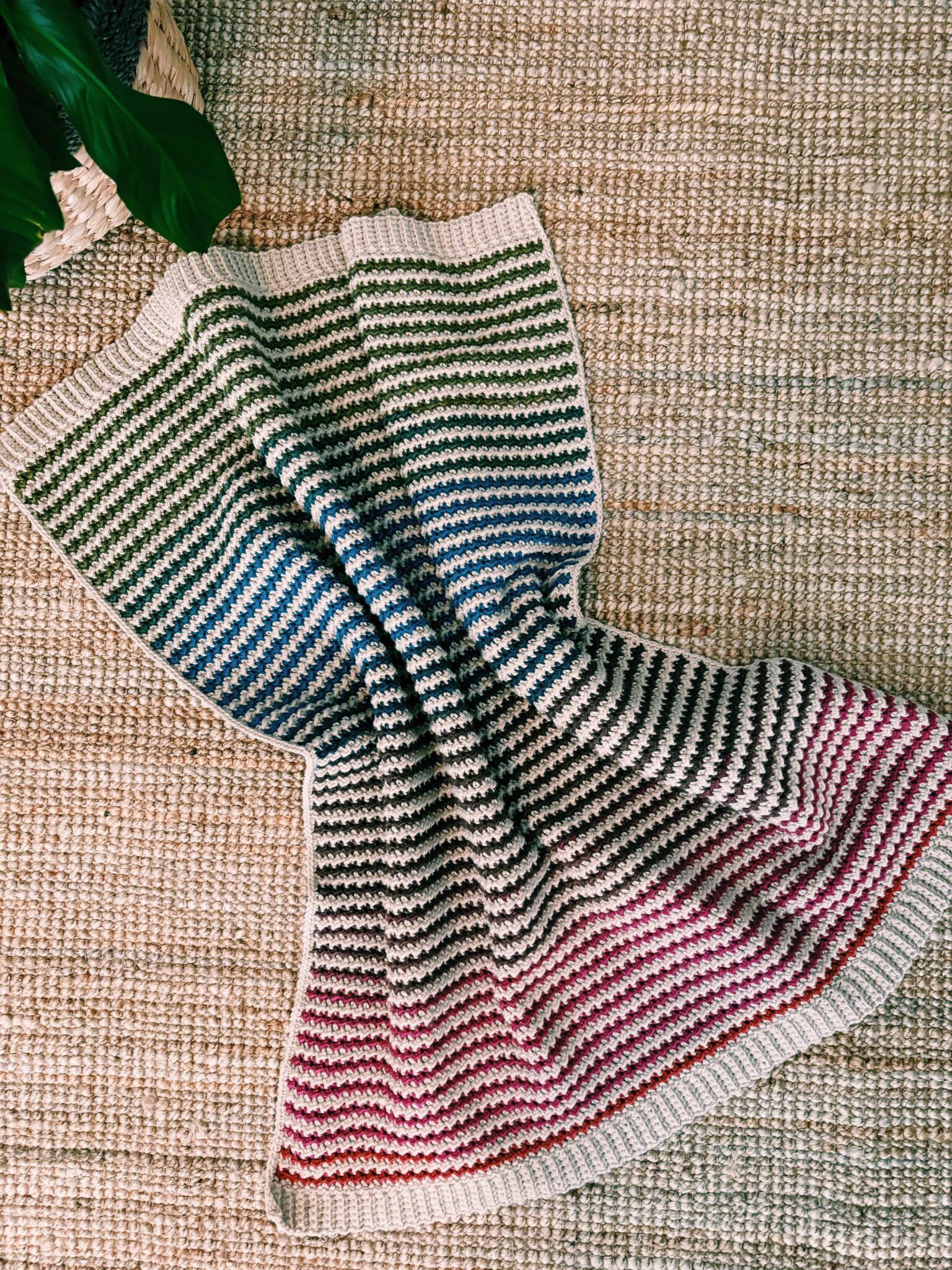
The crunch stitch creates a sturdy, bumpy texture that holds its own against loud color shifts. It’s an underrated gem for self-striping yarn.
Try it in this pattern:
➡️ The Yvette Baby Blanket
💡 Tips for Working With Self-Striping Yarn
- Use a textured stitch – Texture breaks up the visual monotony of stripes and masks sudden transitions.
- Alternate with solid yarn – This instantly tones things down and gives your project structure.
- Plan for the color changes – You can always cut the yarn and start with a new color at the beginning of the row if you want more control (but yes, it means more ends to weave in).
- Choose stitches with short heights – These tend to handle color changes more gracefully.
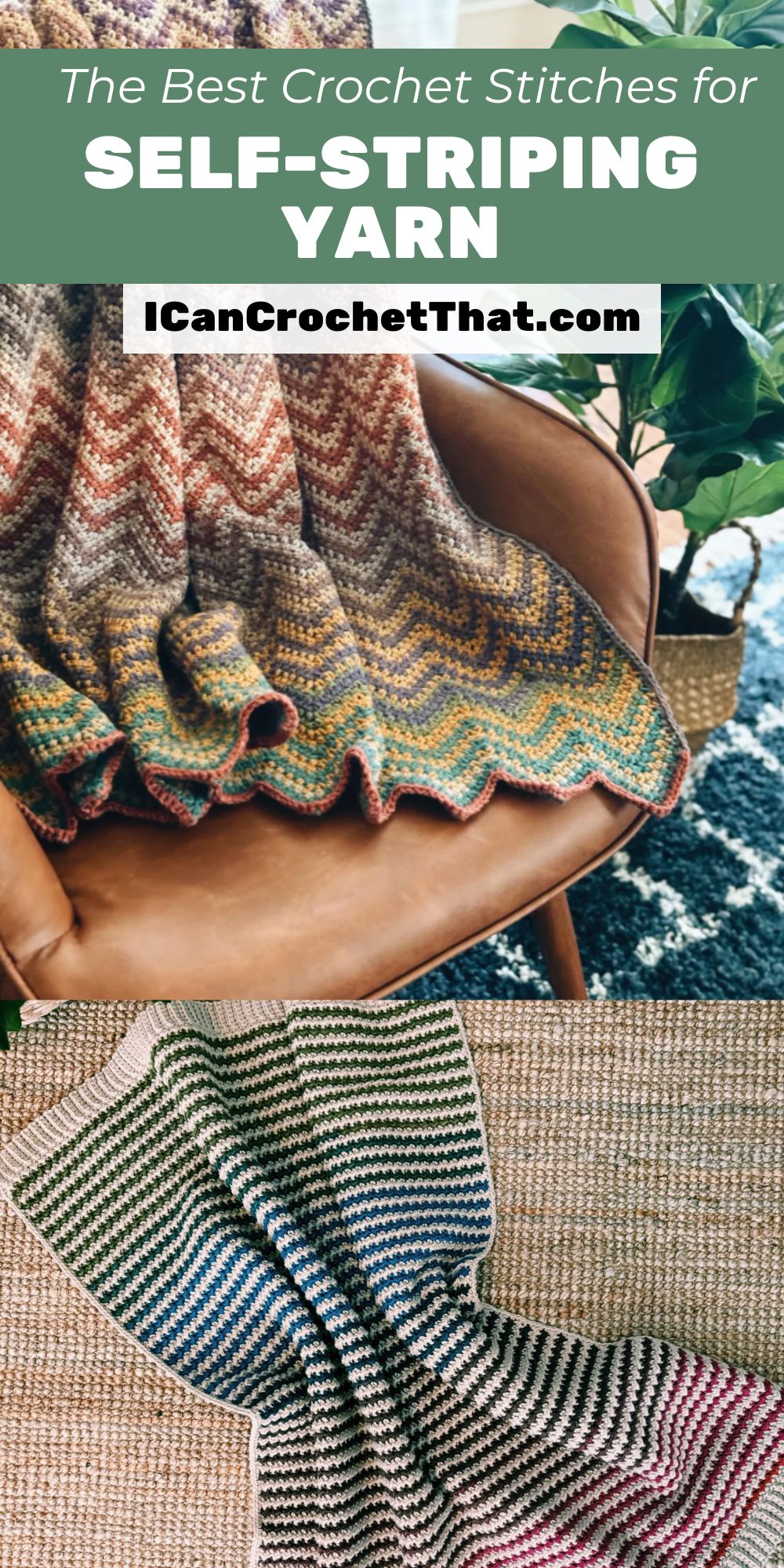
Final Thoughts
Self-striping yarn can be tricky, but it doesn’t have to be your enemy. With the right stitches and techniques, you can turn those color shifts into something that looks intentional—and even beautiful.
I hope this post gave you some ideas (and maybe a few patterns to try!). If you’ve made a project using self-striping yarn and loved how it turned out, tag me on Instagram—I’d love to see it.
And if you’ve been annoyed by harsh color changes before, I totally get it… but don’t give up on this yarn just yet. With the right stitch, anything’s possible.




